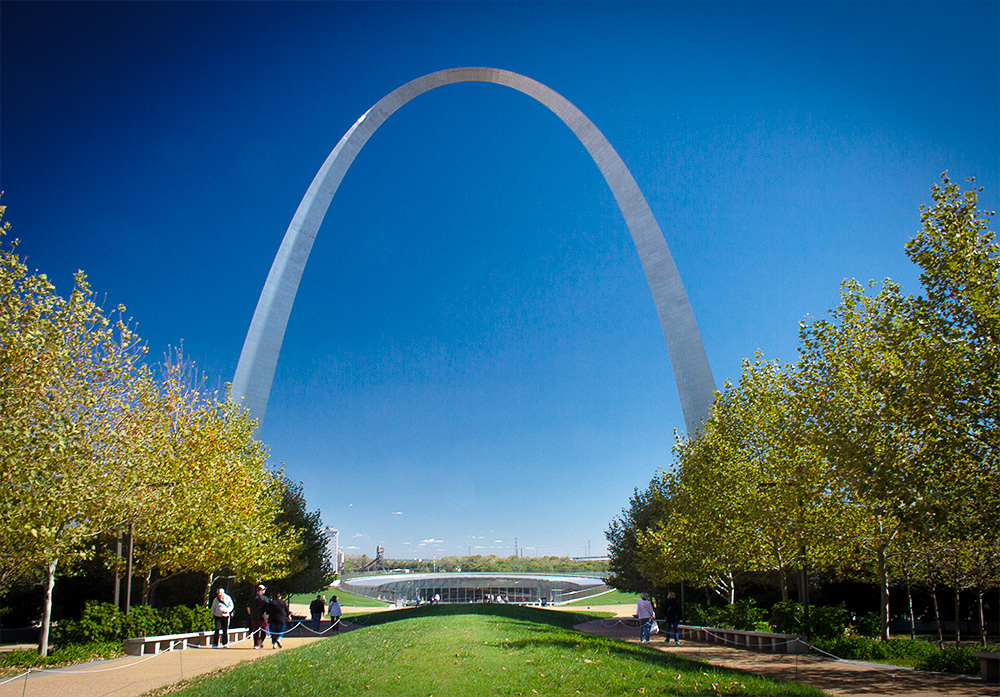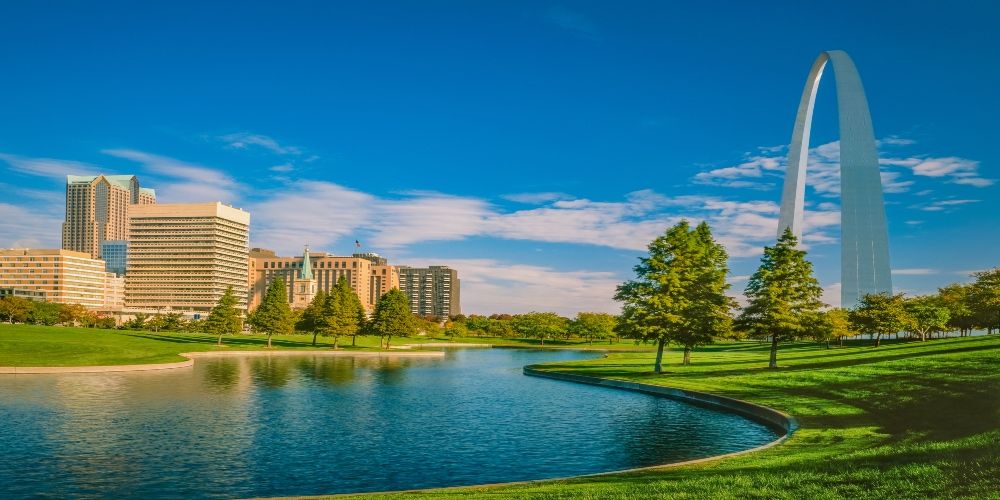Gateway Arch National Park location: What’s the Best Route to This Iconic Landmark
Gateway Arch National Park location: What’s the Best Route to This Iconic Landmark
Blog Article
Discover the Historic Value of Portal Arch National Park in St. Louis, MO
The Portal Arch National Forest in St. Louis, Missouri, acts as an extensive symbol of America's historic story, encapsulating motifs of westward expansion and expedition. This architectural marvel, finished in 1965, not only celebrates crucial events such as the Louisiana Purchase and the Lewis and Clark Exploration yet likewise mirrors the more comprehensive ambitions of a country in makeover. As we explore its multifaceted significance, one must think about just how this famous framework has actually influenced both the social fabric of St. Louis and the cumulative memory of the United States. What deeper tales exist underneath its towering shape?
The Birth of the Entrance Arc
Often concerned as a renowned icon of St. Louis, the Portal Arch was conceived as a monument to honor the westward growth of the United States. The concept for the Arc arised during the 1930s amidst conversations about renewing the riverfront location. Designer Eero Saarinen's layout was picked in 1947 after a national competition, showing both modernist aesthetic appeals and historic relevance.
Construction started in 1963, utilizing stainless steel to produce a sleek, minimal kind that rises 630 feet into the sky. The framework's distinct hyperbolic shape was planned to symbolize the entrance to the West, embodying hope and opportunity. The Arch was finished in 1965, and its dedication occurred on October 28, 1965, marking a turning point in American architectural background.
In 2018, the location surrounding the Arc undertook significant restorations, transforming it into Portal Arch National Forest. This upgrade enhanced visitor ease of access and engagement, solidifying the Arc's role as a central cultural landmark. The Entrance Arch not only stands for St. Louis yet additionally offers as a testimony to the nation's journey, standing as a beacon of ideas and cumulative memory.
Icon of Westward Development
The Entrance Arc stands as a powerful sign of westward development in the USA, encapsulating the spirit of expedition and passion that identified the 19th century. Set Up in St. Louis, Missouri, the Arch memorializes the city's role as a pivotal starting factor for inhabitants heading westward along the Oregon and Santa Fe Trails.
As pioneers ventured right into the uncharted areas, they brought with them desires for prosperity and clean slates, driven by the concept of Manifest Destiny. The Arc goes beyond simple architectural appeal; it embodies the triumphs and difficulties faced by those that sought possibility in the vast, unidentified frontier.
The framework's layout evokes the photo of an entrance, welcoming travelers and dreamers alike to check out the possibility of the American West. It works as a pointer of the transformative trip that formed the country, marking the change from a mainly agrarian society to a growing land of development and sector.

Architectural Advancement and Design
Remarkable in its design, the Entrance Arch is a prototype of building development that seamlessly blends form and function. Made by architect Eero Saarinen and structural engineer Cass Gilbert, this iconic monument stands at 630 feet, making it the tallest arc on the planet and a testament to modern-day engineering prowess. Its hyperboloid form not just develops a visually striking silhouette versus the St. Louis horizon yet additionally serves an important structural objective, distributing weight equally and improving security.
Constructed from stainless-steel, the Arch's smooth, reflective surface area captures the transforming light throughout the day, creating a vibrant aesthetic experience. The selection of materials and innovative building and construction methods, consisting of the use of premade sections, assisted in the Arch's conclusion in 1965, despite the difficulties presented by its ambitious layout.
Site visitors can rise to the monitoring deck via a special tram system, experiencing panoramic sights of the Mississippi River and the city below. The combination of visual charm and practical layout exemplifies Saarinen's vision of creating a monolith that not only commemorates America's westward expansion yet also stands as a spots of building accomplishment in its very own right.
Social Impact on St. Louis
Situated in the heart of St. Louis, Gateway Arch National Park acts as a crucial cultural touchstone for the city and its citizens. The Arc is not merely a building wonder; it symbolizes St. Gateway Arch National Park parking. Louis's historical role as a gateway to the West and shows the city's abundant heritage. Its presence has cultivated a feeling of pride amongst locals and has ended up being an important component of the city's identity
The park brings in countless visitors annually, contributing substantially to the neighborhood economic situation and promoting a dynamic cultural scene. Occasions, celebrations, and curricula focused around the Arc advertise area interaction and social exchange, while the surrounding landscape offers as a celebration room for diverse populations.
In Addition, the Gateway Arch has actually influenced plenty of musicians, filmmakers, and artists, installing itself in the social fabric of St. Louis. It has been included in numerous forms of media, representing durability and development. By bridging the past with today, Portal Arch National Forest not only commemorates St. Louis's historic story yet also remains to shape its cultural evolution, making it a sign of motivation for future generations.

Entrance Arch in American Memory
A sign of American aspiration and expedition, the Entrance Arc holds a famous area in the collective memory of the country. Designed by architect Eero Saarinen, the Arc was completed in 1965 and stands as a testament to America's westward growth and the spirit of the frontier. Its sleek, modernist layout contrasts with historic frameworks, catching the significance of development and progression that defines the American experience.
The Arc not only commemorates the Louisiana Purchase and the Lewis and Clark Exploration however additionally personifies the battles and triumphs of numerous people that added to the nation's development. It acts as a centerpiece for national satisfaction, bring great post to read in countless site visitors each year that look for to link with this emblem of American history.

Conclusion
Finally, Portal Arch National Park acts as a powerful icon of America's westward growth and the historic stories related to it. Its building technology and layout reflect the ambitions of a country, while its social influence resonates within the city of St. Louis and past. Gateway Arch National Park parking. As a monument to the Louisiana Purchase and the Lewis and Clark Expedition, the Gateway Arc remains to inspire and educate future generations concerning the transformative journey of the United States
Please visit one of our local supporters - Axis Spine And Orthopedics Surgeon St Louis Mo
Report this page